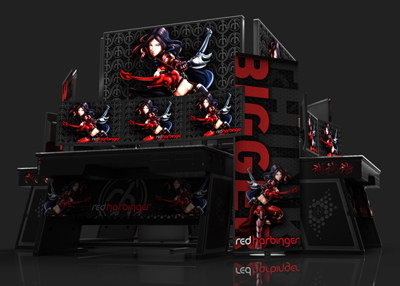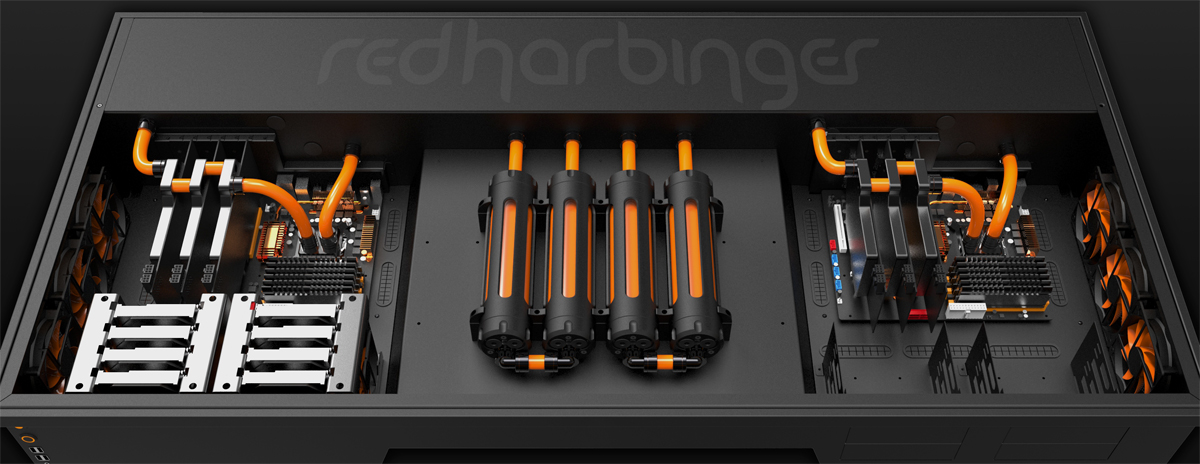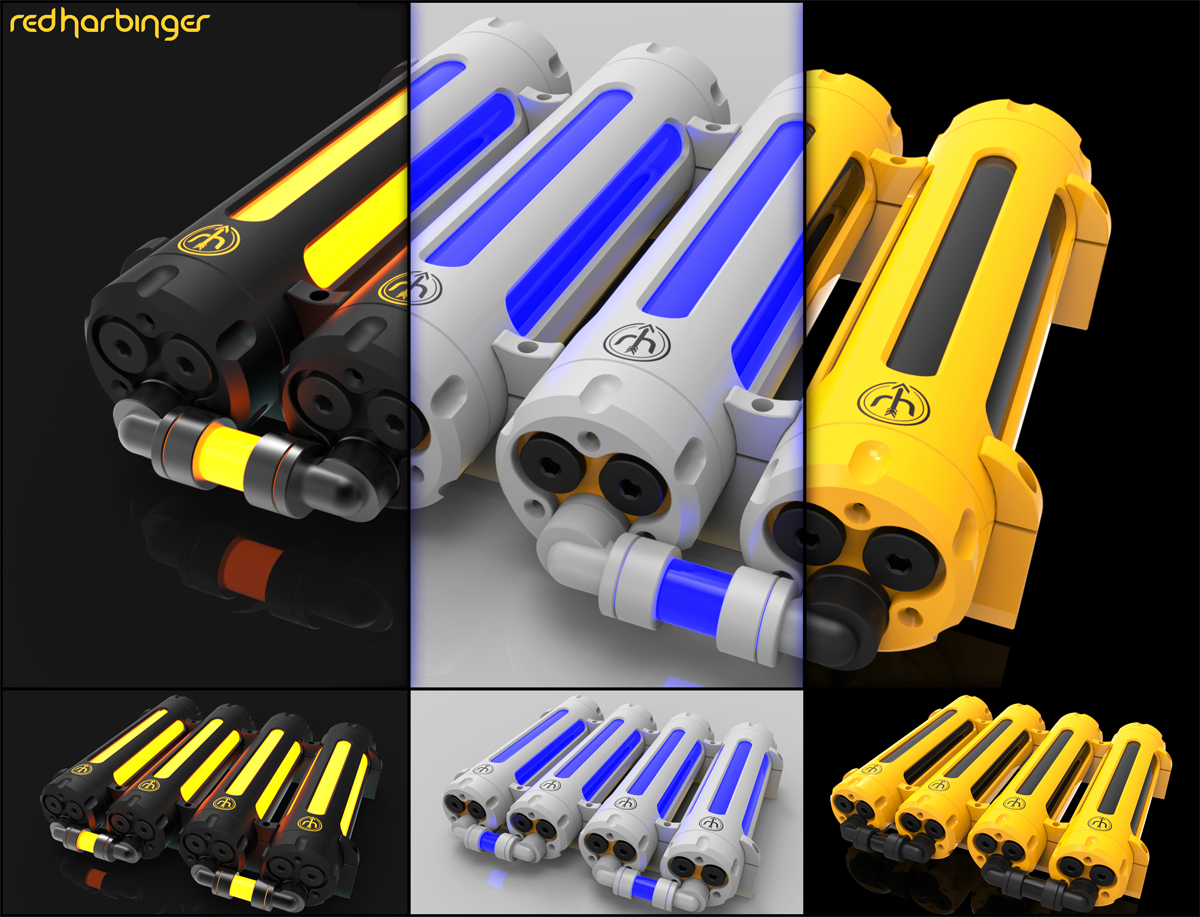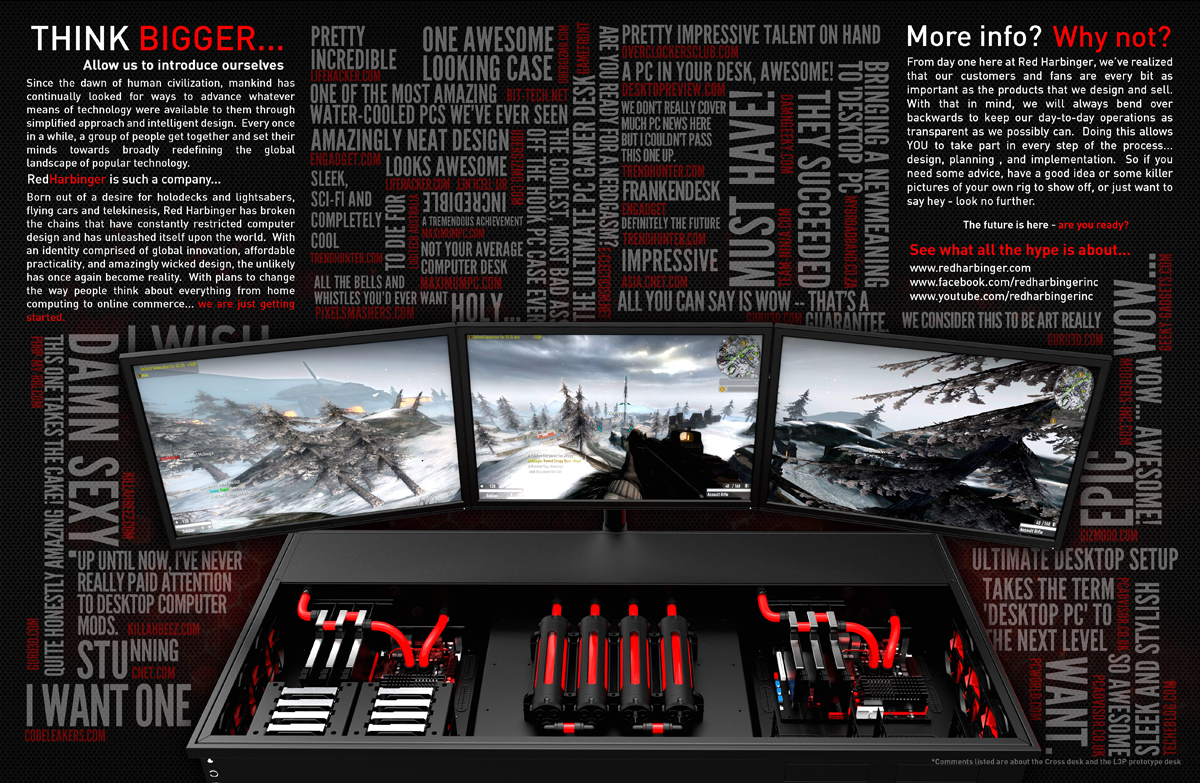Red Harbinger is an up and coming tech-design and solutions company that is focused on changing the way that people think about day-to-day computing. As PC enthusiasts, they were collectively tired of sub-par PC aesthetics and functionality. With PC users ranging from online gamers, musicians, artists and programmers to Farmville freaks, moms, and bloggers, they saw the opportunity to assemble the most innovative talent with the goal of righting the wrongs that have become so prevalent in today’s computer industry. Through creative intelligence and brilliant design, Red harbinger is poised to change the face of the PC enthusiast market and we talked to Vice President and KeyShot user, Shawn Rabensburg, about how they’re using KeyShot to help make that happen.
Shawn Rabensburg / Red Harbinger
Modeling software used:
SolidWorks
One out of every seven people worldwide own a computer; three out of four people in the United States own at least one computer. So why are we still stuck on these ugly black boxes that contain a rats nest of cables and wires? Red Harbinger has aimed to remedy this problem globally, and by doing so, their designs have recently become some of the most sought after hardware in the industry.
Red Harbinger was formed in mid-2011. Since then, their ideas have taken off and the interest in their products exploded virtually overnight. The team all has backgrounds that are heavily steeped in computers. Whether it’s through gaming, graphic design, engineering, programming, sound and video production, or serious modification design, each brings a wealth of knowledge to the table. They may be new to the scene, but are also drawing on decades of experience.
 Luxion: What sets Red Harbinger apart?
Luxion: What sets Red Harbinger apart?
Shawn Rabensburg: We’ve been asked this question a few times in the recent past and the answer keeps changing little by little because there are so many things that set our products apart. Let’s use the Cross desk for instance.
The main thing with Cross is that currently there isn’t a computer case on the market that offers the customization and scalability options that we built into ours. Oh sure, there are a few cases out there that allow you to throw 2 motherboards inside.
But they don’t offer the cable management, cooling, expansion, or aesthetic options and features that Cross offers. For the most part they are just alternate takes on the same case design that has been getting overplayed in the PC world for the past 15-20 years.
So when you buy a Red Harbinger product, you can take comfort in the fact that our products don’t fit into any of the standard molds. Our products are something else entirely.
L: What would you say is unique about the design process at Red Harbinger?
SR: This is where things get kind of interesting. Most of us currently don’t have the advantage of living very close to each other, so all of our design collaboration is accomplished online. Thomas Nunn (CEO) and Chuck Prill (Logisitics) live in Texas, Scott Bruins (Engineer) is in Minnesota, I am in Nebraska, and Peter (Designer) is all the way across the world in Holland. This presents all kinds of challenges with scheduling, on top of the fact that we all maintain 40 hour per week jobs that are still paying all of our bills. But we have managed to pull through all of that and design a product that certainly stands apart from the rest. We all decide from a very high level exactly what we would like to see in a final design. Scott will take all of our input and lay the groundwork, then upload all of his progress online. We all QA the design and tweak it back and forth until we are happy and we send it off to prototype. Once we got over the hurdle of not always being able to collaborate in real time with each other the rest of the pieces fell into place.
L: What software do you use for 3D modeling?
SR:We use SolidWorks for the design and engineering process. Scott will send the 3D data to me and I import to KeyShot for the graphics work. Lately we have been dabbling in Augmented Reality, and one of the requirements of AR work is that you have a relatively lightweight model or scene. While SolidWorks is simply amazing for a lot of things, I have found that producing a realistically detailed yet low poly version of our desk and all of its components is not really one of them. Instead, we use a SolidWorks importer plugin for 3dsMax. Once the model is in 3dsMax, I have to take a little extra time to individually remodel or re-topologize each piece to reduce the overall poly count. From there I can import into Unity for AR work.
L: What brought you to the decision to use KeyShot?
SR:Once I saw the ease of use and rendering speed, it was pretty much a no brainer. Even more so when I noticed there were plugins that directly supported the import of data from SolidWorks. A designer can spend hours and hours setting up lights and scenes, adjusting materials, tweaking render settings, etc. As VP of this company, I obviously have other tasks that also need my attention and at the end of the day, I simply don’t have the time for all that. KeyShot is amazing in that regard because it allows me to quickly and precisely create a photorealistic visual representation of our products. It has managed to work its way so deeply into my own processes, that I’m not really sure what I would do without it at this point. KeyShot helps my job not suck. Especially since KeyShot brought in the ability to use material templates. With a model like the Cross desk that is comprised of hundreds of smaller models, that’s a pretty big deal.
L: How has KeyShot helped you save time, money or improve quality??
SR:I mainly produce renders of our various product pieces to be used in-house. This gives us a first look at how whatever piece we are working on is going to look. As a small startup company that has limited funds, we don’t really have the luxury of producing prototype after prototype until we finally come up with a design or a look that we are happy with. So we wind up obsessing over the details in the software and try our best to nail it in the first prototype run. So far this process has worked for us and KeyShot has definitely played a big part in that.
L: What has been your favorite project?
SR:It honestly would be difficult to nail down a “favorite project” of the past year since we formed Red Harbinger. I think all of us tend to try to have a good time no matter what piece of the puzzle we are working with on any given day. Except while designing the legs. We all hated talking to each other for about two months during that time until we came up with a design that everyone was happy with.
If I absolutely had to nail down my highlights they would include posting the very first images of our design online for the world to see, seeing our first prototype build, filming for our kickstarter campaign with UFC legend Jens Pulver, and reading the first couple of articles written about us in PCGamer and Gamefront (even if they were slightly inaccurate). It has really been a tremendously crazy year, but we’ve had a blast the entire way.
L: What is one piece of advice you would pass along to someone interested in engineering and design?
SR:Best piece of advice I can give is to not focus on all the reasons why something can’t be done and focus on why it can be done. If you just pick a place to start and begin hammering everything out, all of the pieces will inevitably fall into place in front of you. So put on your headphones, crank up your music and just get to work.
Red Harbinger is:
Thomas Nunn (CEO & Pres)
Shawn Rabensburg (CIO & VP)
Peter Brands – L3P (Director of Design)
Scott Bruins (Chief Engineer)
Chuck Prill (Chief Logistician)
Connect with Red Harbinger:
www.forums.redharbinger.com
www.facebook.com/
www.youtube.com/
www.twitter.com/redharbingerpc









